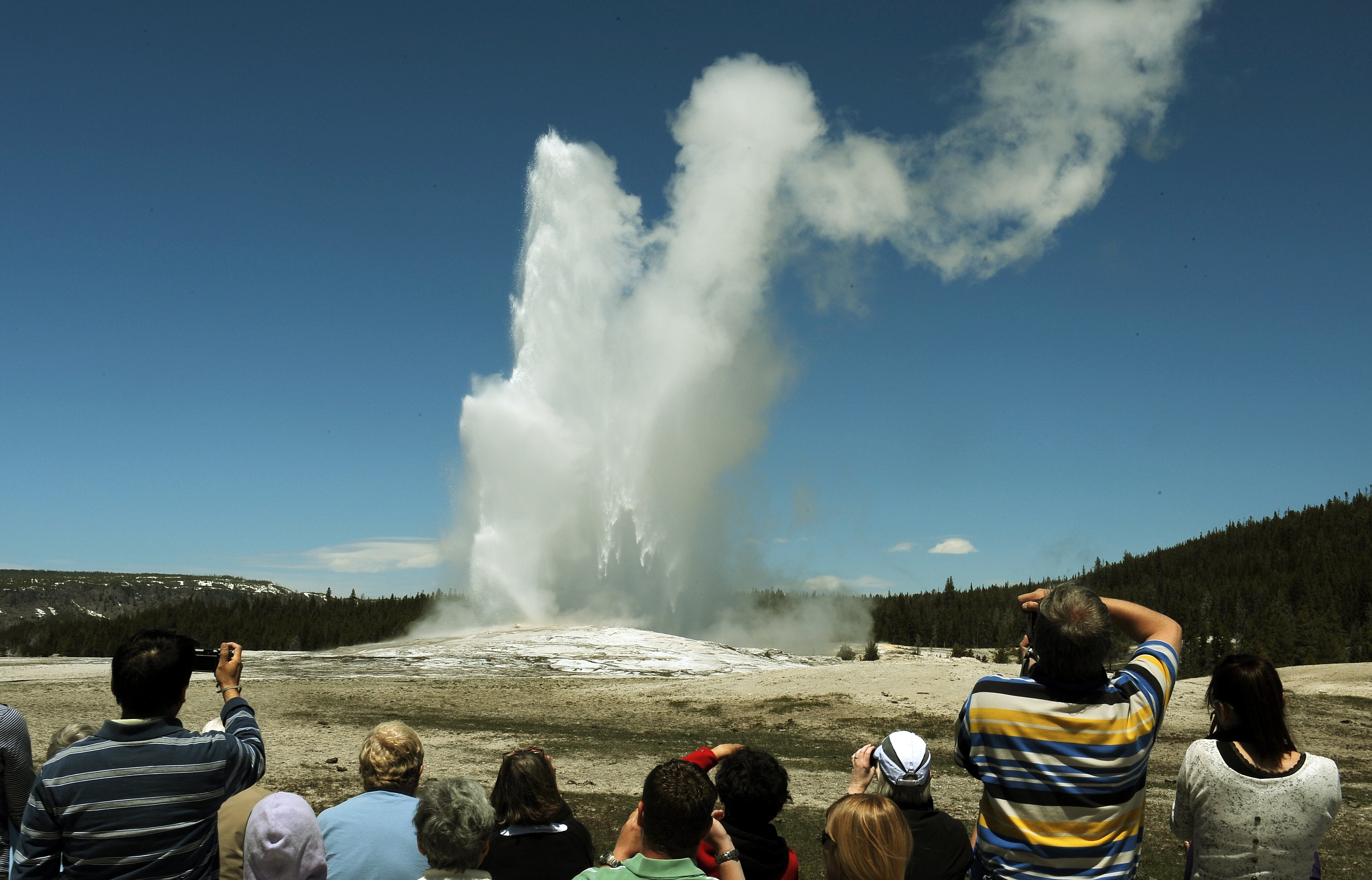A team of geophysicists recently strung a large wire loop from a helicopter and flew over Yellowstone National Park in order to see its hidden underground networks. They managed to collect a trove of data that highlighted electrical and magnetic properties of the water and earth under the park, as well as how the hot springs are more interconnected than previously thought.
Yellowstone is a 9,000-square-km park that has numerous hot springs on its surface, most famously Old Faithful, one of the park’s 500-odd geysers. But these researchers wanted to know more about how the water underground was sourced and how interconnected the entire system was. Their findings were published this week in Nature.
“We produced images of Yellowstone’s subsurface hydrothermal ‘plumbing’ system — the pathways that hydrothermally heated waters take to reach the surface,” said Steve Holbrook, a geophysicist at Virginia Tech and a co-author of the paper, in an email to Gizmodo. “We see clear geological controls on the hydrothermal plumbing — in particular, the roles of deep faults, shallow fractures, and the boundaries at the base of the thick lava flows (tuff and rhyolite), all of which guide the movement of water.”

The researchers generated over 4,023 km of helicopter line data by flying a 24.38 m-wide hexagonal instrument called SkyTEM over the park. SkyTEM sent electromagnetic pulses to the ground roughly every 27.43 m. The pulses travel up to around 701.04 m beneath the surface before bouncing back to a detector on the instrument.
“If we picture the helicopter flying over a football field, we could picture one sounding being taken at the back of the home end zone, the next one at the 18.29 m line, the next one at midfield, then one at the other 18.29 m line, and finally one at the back of the visitor’s end zone — five soundings total over the full length of the field,” Holbrook said. “Then we put those soundings next to each other over very long transects, and we get a picture of layers in the subsurface — how deep they are, which way they’re dipping, and so forth.”
The researchers also took magnetic field measurements, which gave them information on the magnetic properties of rocks as deep as 2,499.36 m below Yellowstone. Taken together, the data allowed them to map out the electrically conductive and resistive elements beneath the surface: effectively, the plumbing of Yellowstone.
A significant finding from the work was how connected distant features are underground. Old Faithful and the park’s Upper Geyser basin share a hydrothermal source with the park’s Firehole Meadows at just 650 below the surface, though the sites are over 10 km away from one another.
#SkyTEM @YellowstoneNPS investigating #OldFaithful plumbing @USGS @UWGG pic.twitter.com/dmiMCCqMaD
— Carol Finn (@CarolFinn3) November 20, 2016
Holbrook added that the hydrothermal connection also implies connections in the various hot springs’ geochemistry and microbiology. Yellowstone’s hot springs are unique for their extremophile life; hardy critters like cyanobacteria that thrive in scalding temperatures make good subjects for scientists trying to figure out what alien life may be like. The newly discovered hydrothermal connections between different areas of the park may change biologists’ understanding of extremophile evolution.
“We plan to work with microbiologists looking to link areas of groundwater and gas mixing to regions of extreme microbial diversity, geologists using our models to map lava flows and estimate eruptive volumes, and hydrologists interested in incorporating flow paths and regions of hot and cold fluids to determine how the underground water flows,” said Carol Finn, a geophysicist with the U.S. Geological Survey and the paper’s lead author, in an email to Gizmodo.
“In the future, the integration of our models with new, deeper-sensing electromagnetic data offers the possibility of imaging the connections between Yellowstone’s shallow and deep hydrothermal systems and magma, providing a complete view of the system,” Finn added.
The immense amount of data the team collected is just waiting to be gleaned for more insights. The airborne research is just the first pass at a literally in-depth look at Yellowstone’s fundamental processes.
